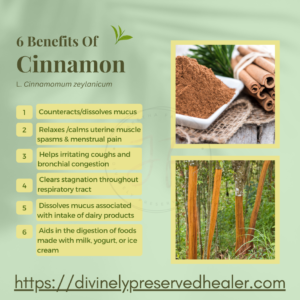 Derived from the inner bark, which curls up as it dries, comes the stimulating warm spice of cinnamon. It targets the glandular (or endocrine) system, consisting of glands that increase circulation and release hormones throughout, including the reproductive system and the pancreas, often linked to diabetes.
Derived from the inner bark, which curls up as it dries, comes the stimulating warm spice of cinnamon. It targets the glandular (or endocrine) system, consisting of glands that increase circulation and release hormones throughout, including the reproductive system and the pancreas, often linked to diabetes.
It is a natural cure for allergic rhinitis (or hay fever). It thus helps to resolve irritating coughs and bronchial congestion, even if linked to the consumption of dairy products.
The highest quality with the best taste and fragrance is Ceylon cinnamon, which has a thinner bark than cassia cinnamon, which has a thicker bark and is commonly found on grocery store shelves.
PROPERTIES: alterative, anthelmintic, antibacterial, anticatarrh, antifungal, anti-inflammatory, antispasmodic, antiviral, astringent, expectorant, hemostat
SOURCES:
McBride, K. (2019). The Herbal Kitchen. Newburyport, MA: Red Barren.
Webb., M. A. & Craze, R. (2000). The Herb & Spice Companion. New York: Metro Books.
